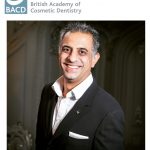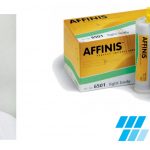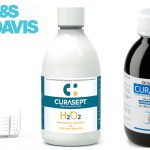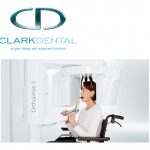A hundred years ago people expected and accepted the idea of wearing full dentures in later life. Today, the majority of people aged over 65 retain at least some of their natural teeth. Progress in prevention, dental care and public attitudes has greatly improved, which is an achievement that should be celebrated. However, the provision of dental care for older people has become more complex. For example, periodontitis is apparent to some degree in most older adults[1] and globally, high levels of tooth loss, dental caries, xerostomia and mouth cancer are evident.[2],[3] Where once treatment may have consisted of providing older people with full dentures, it now requires increased attention to manage and maintain the oral health and well-being of our ageing population.
According to Age UK there are almost 12 million people aged 65 and above in the UK.[4] Health conditions that remain common in this cohort include hearing loss, cataracts, osteoarthritis, chronic obstructive pulmonary disease, diabetes, depression and dementia.[5] Many older adults are likely to experience one or more long-term or chronic health conditions and more than half of adults aged 65-74 take prescribed medication.[6] The most common side effect of the most widely prescribed medicines is xerostomia[7] and with a reduction of saliva and its natural anti-microbial properties, this poses an increased risk of dental decay and oral disease.[8] Nevertheless, the care of older adults is largely focused on managing long-term conditions and improving disability and frailty. Consequently, the mouth is one of the first areas that can become neglected by people with infirmities in old age.[9]
People that have difficulty with mobility or manual dexterity can have problems with daily activities such as performing an effective oral hygiene routine, preparing meals and eating a healthy, balanced diet. Those that experience pain as a result of dental issues can have problems sleeping or eating properly and patients that are embarrassed about the condition of their teeth may be reluctant to speak, smile or socialise. As well as a higher risk of dental caries, periodontal disease and tooth loss, poor oral health can have wider implications on general health, well-being and quality of life.
Research has shown that there is an association between poor oral health and a range of adverse health outcomes including cardiovascular disease, diabetes and respiratory problems.[10] Over the last two decades evidence has emerged to suggest that diabetes can heighten the chances of developing periodontal disease[11],[12] and increase periodontal destruction.[13] However, this is a bi-directional issue as periodontal infection can adversely impact glycaemic control,[14],[15] and make it more difficult for diabetic patients to control their blood glucose levels. Poor oral health has also been linked with frailty, which is associated with adverse outcomes such as hospitalisation, disability, functional decline, the need for long term care and even death. Frailty is defined by the presence of at least three of the following characteristics – low grip strength, low energy, slowed walking speed, low physical activity, and/or unintentional weight loss.[16] Tooth loss, denture related problems and dry mouth can all influence eating, chewing and swallowing functions which in turn, can affect nutritional status. Moreover, composite or cumulative oral health problems are associated with greater risk of incident frailty. [17]
Recently a systematic review indicated that patients with periodontitis may have a higher probability of developing cognitive impairment than those without periodontitis.
Studies suggest that the relationship between periodontitis and cognitive decline may be attributed to three possible mechanisms – direct process through the bloodstream; an indirect process through inflammatory mediators or induction of expression of platelet aggregation proteins.[18] It should be noted that patients with cognitive decline may have difficulty with self-care and oral hygiene, which could explain a higher incidence of periodontal disease in these individuals. However, studies reveal that periodontitis is associated with an increase in cognitive decline in patients with Alzheimer’s Disease. Indeed, research conducted in 2019 showed that proteins produced by the pathogen Porphyromonas gingivalis (a keystone pathogen in chronic periodontitis) are highly concentrated in the brains of people with Alzheimer’s disease.[19]
Oral health is generally under-recognised in the assessment and care of older adults. Yet as discussed, it may provide useful markers for conditions such as frailty and cognitive decline and offer a valuable addition to the health screening of individuals in later life. The British Society of Dental Hygiene and Therapy (BSDHT) provides a voice for dental hygienists and dental therapists. It listens, responds and supports its members, influences positive change and actively promotes the vital contribution that these clinicians make to the ongoing health of the nation.
The extent and severity of oral conditions intensify with age and the complexity of treatment required is likely to increase dramatically over the coming years. Good oral health forms an essential part of the healthy ageing process and ensures that individuals can participate in life free from pain and embarrassment. It allows older people to enjoy a balanced, nutritious diet that contributes to their well-being, quality of life and general health.
For more information about the BSDHT, please visit www.bsdht.org.uk,
call 01788 575050 or email enquiries@bsdht.org.uk
Author:
DIANE ROCHFORD – President BSDHT. CEB DIP DENT HYGIENE 1996, BSC (HONS) 2016. DENTAL HYGIENIST
[1] Thomson W.M. Epidemiology of oral health conditions in older people. Gerodontology 2014 31 (suppl.1): 9-16. https://onlinelibrary.wiley.com/doi/pdf/10.1111/ger.12085 [Accessed 19th October 2020]
[2] Petersen P.E et al. Improving the oral health of older people: the approach of the WHO Global Oral Health Programme. Community Dentistry and Oral Epidemiology. April 2005; 33(2)81-92. https://onlinelibrary.wiley.com/doi/abs/10.1111/j.1600-0528.2004.00219.x [Accessed 24th October 2018]
[3] Tonetti M.S. Dental caries and periodontal diseases in the ageing population: call to action to protect and enhance oral health and well‐being as an essential component of healthy ageing – Consensus report of group 4 of the joint EFP/ORCA workshop on the boundaries between caries and periodontal diseases. J Clin Periodontdol 2017: 44 (S18) S135-S144. https://onlinelibrary.wiley.com/doi/epdf/10.1111/jcpe.12681 [Accessed 19th October 2020]
[4] Age UK. Later life in the United Kingdom 2019. https://www.ageuk.org.uk/globalassets/age-uk/documents/reports-and-publications/later_life_uk_factsheet.pdf [Accessed 19th October 2020]
[5] World Health Organsiation (WHO). Fact sheet. Ageing and health. http://www.who.int/news-room/fact-sheets/detail/ageing-and-health [Accessed 19th October 2020]
[6] NHS. Almost half of adults take prescription drugs. Dec 2014. Findings from The Health Survey for England 2013. https://www.nhs.uk/news/medication/almost-half-of-all-adults-take-prescription-drugs/ [Accessed 19th October 2020]
[7] Public Health England and The British Association for the Study of Community of Dentistry. What is known about the oral health of older people in England and Wales. A review of oral health surveys of older people. Published December 2015. https://assets.publishing.service.gov.uk/government/uploads/system/uploads/attachment_data/file/489756/What_is_known_about_the_oral_health_of_older_people.pdf [Accessed 19th October 2020]
[8] Faculty of Dental Surgery of Royal College of Surgeons. Improving older people’s oral health. file:///Users/pr/Downloads/FDS%20Improving%20older%20peoples%20oral%20health%202017%20(2).pdf [Accessed 19th October 2020]
[9] Saunders M.J and Yeh C. Oral health in Elderly people. Chapter 8. http://samples.jbpub.com/9780763782627/9780763782627_CH08_PASS01.pdf [Accessed 19th October 2020]
[10] Siegal E. et al. Interventions to improve the oral health of people with dementia or cognitive impairment: A review of the literature. The Journal of Nutrition, Health & Aging 2017;21(8):874-886. https://europepmc.org/article/med/28972239 [Accessed 19th October 2020]
[11] Dr Guglielmo Campus et al. Diabetes and Periodontal Disease: A Case-Control Study
Journal of Periodontology 2005, 76(3) 418-425. http://www.joponline.org/doi/abs/10.1902/jop.2005.76.3.418 [Accessed 19th October 2020]
[12] Ira B Lamster et al. The relationship between oral health and diabetes mellitus. The Journal of the American Dental Association. 2008, 139, Sup 5,19S-24S. http://jada.ada.org/article/S0002-8177(14)63883-6/fulltext [Accessed 19th October 2020]
[13] Mealey BL. Periodontal disease and diabetes. A two-way street. J Am Dent Assoc. 2006 Oct;137 Suppl:26S-31S. https://www.ncbi.nlm.nih.gov/pubmed/17012733 [Accessed 19th October 2020]
[14] Mealey BL. Diabetes and periodontal disease: two sides of a coin. Compend Contin Educ Dent. 2000 Nov;21(11):943-6, 948, 950. https://www.ncbi.nlm.nih.gov/pubmed/11968145 [Accessed 19th October 2020]
[15] Taylor GW et al. Periodontal disease: associations with diabetes, glycaemic control and complications. Oral Dis. 2008 Apr;14(3):191-203. https://www.ncbi.nlm.nih.gov/pubmed/18336370. [Accessed 19th October 2020]
[16] Fried LP et al. Frailty in older adults: evidence of a phenotype. J Gerontol A Biol Sci Med Sci. 2001 Mar;56(3):M146-56. https://www.ncbi.nlm.nih.gov/pubmed/11253156 [Accessed 19th October 2020]
[17] Ramsay S.E. Influence of poor oral health on physical frailty: A population-based cohort study of older British men. JAGS March 2018: 66(3) 473-479 https://onlinelibrary.wiley.com/doi/pdf/10.1111/jgs.15175 [Accessed 19th October 2020]
[18] Nascimento P.C. et al. Association with periodontitis and cognitive impairment in adults: A systematic review. Front Neurol 2019: 10: 323. https://www.ncbi.nlm.nih.gov/pmc/articles/PMC6492457/pdf/fneur-10-00323.pdf [Accessed 19th October 2020]
[19] Dominy S.S. et al. Porphyromonas gingivalis in Alzheimer’s disease brains: Evidence for disease causation and treatment with small-molecule inhibitors. Science Advances. Jan 2019: 5(1); eaau3333. https://advances.sciencemag.org/content/5/1/eaau3333.full [Accessed 19th October 2020]















